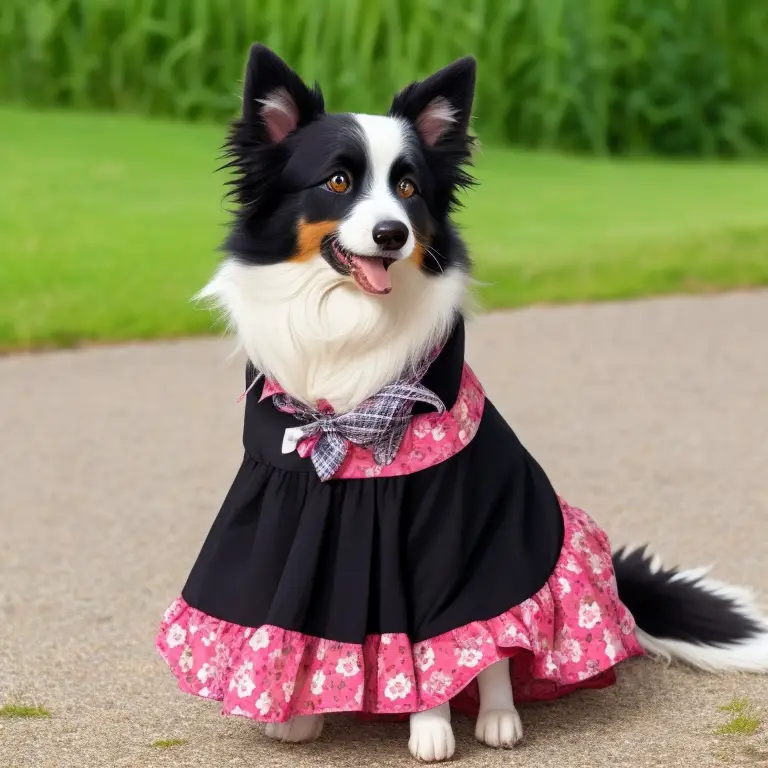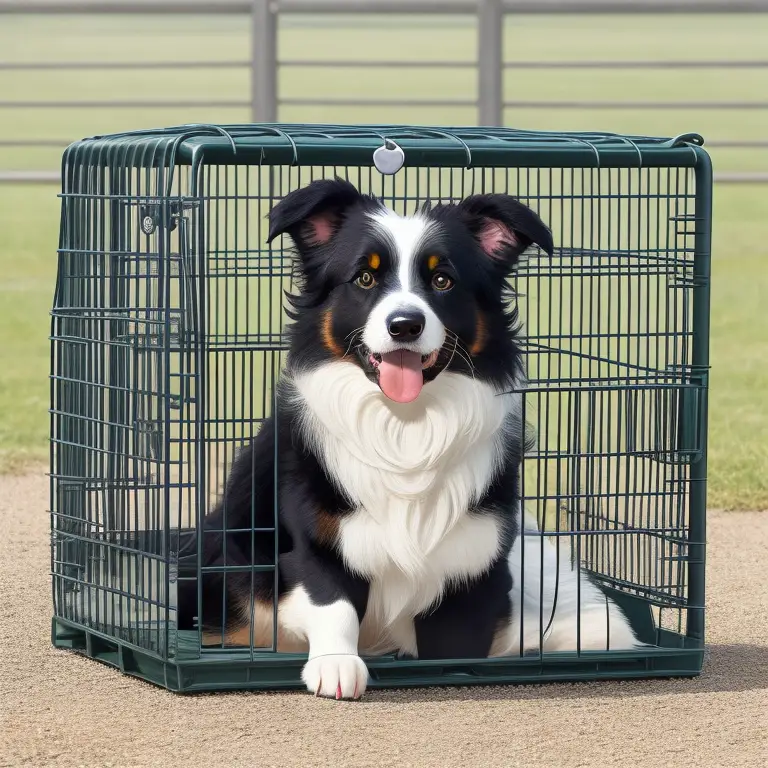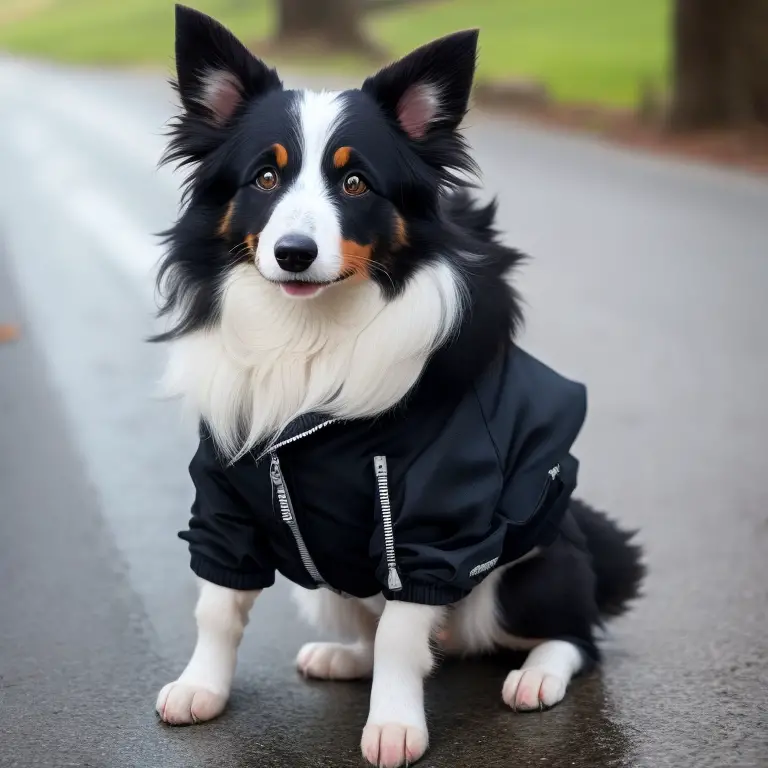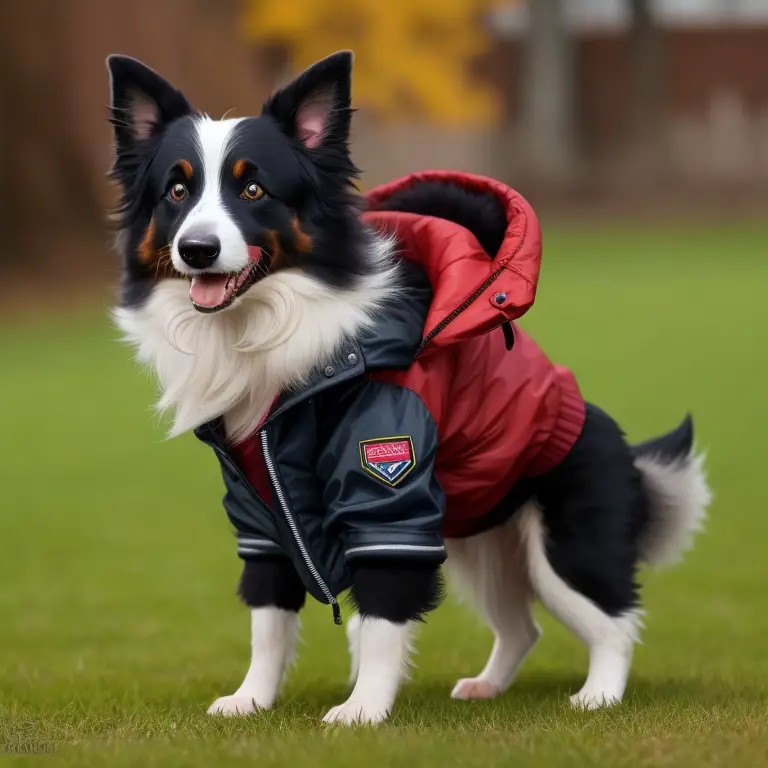Are Border Collies Good With Cats?
You’re a cat lover, but you’ve always been intrigued by Border Collies, and you’re considering adopting one. You imagine them herding sheep or frisbee-ing gracefully in the park – but what about their ability to live with cats?
It’s a common question, and one that many prospective Border Collie owners face.
In this article, we’ll explore the dynamic between Border Collies and cats, examine the challenges, and suggest some steps you can take to help your furry friends coexist happily. So, if you’re wondering if a Border Collie could be compatible with your feline friend, keep reading!
| Border Collies | Cats |
| Intelligence and Trainability | Independent and less trainable compared to dogs |
| Energy Level | High energy level |
| Socialization | Can be trained to be friendly with cats through early socialization |
| Predatory Instincts | Have strong herding instincts and may chase cats; may require supervision |
| Compatibility | Can live peacefully with cats if introduced properly and under supervision |
Are Border Collies Good with Cats?
General Challenges
Border Collies are known for their intelligence and high energy levels. They make great pets and companions, but when it comes to cats, there can be some challenges.
Some of the general challenges when it comes to Border Collies and cats are:
- Prey drive: Border Collies have a natural instinct to chase and herd animals, which may trigger their prey drive. This can make them a potential danger to cats.
- High energy: Border Collies have high energy levels that need to be drained through regular exercise and mental stimulation. Without enough stimulation, they may become restless and end up chasing your cat.
- Dominance: Border Collies can be dominant and possessive of their territory and resources, which can lead to aggression towards cats.
- Breathing problems: some Border Collies have short snouts, which can result in respiratory problems like snoring, making them less ideal to get along with cats.
If you have a Border Collie and a cat, training them to get along is vital. In the next section, we will discuss how to train your Border Collie to get along with cats.
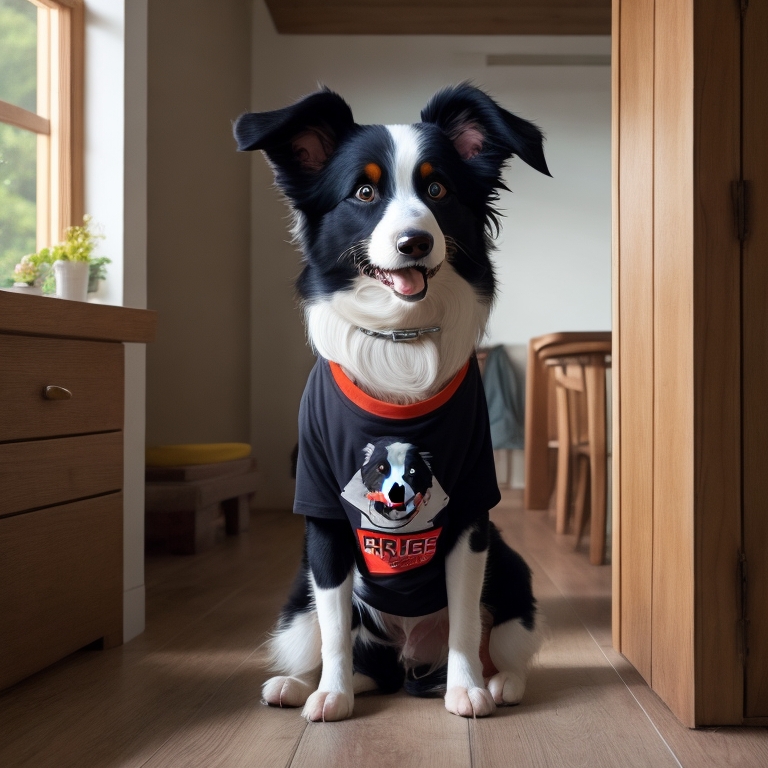
Training a Border Collie to get along with Cats
If you’re wondering whether Border Collies can get along with cats, the short answer is yes. However, getting them to coexist peacefully may require some training.
Here are some tips for training your Border Collie to get along with cats:
- Introduce them slowly and gradually. Start by placing them in different rooms and letting them get used to each other’s scent.
- Use positive reinforcement. Reward your dog for good behavior around the cat, such as ignoring it or playing gently with it.
- Supervise all interactions. Keep a close eye on the dog and cat when they’re together until you can trust them to be alone together.
- Provide a safe space for the cat. Make sure the cat has a high place to retreat to if it feels threatened by the dog.
Remember that every dog is different, and some may take longer than others to get along with cats. Be patient and consistent in your training, and don’t force them to be together if they don’t seem comfortable around each other.
With proper training and supervision, a Border Collie can learn to get along with cats and even become friends with them.
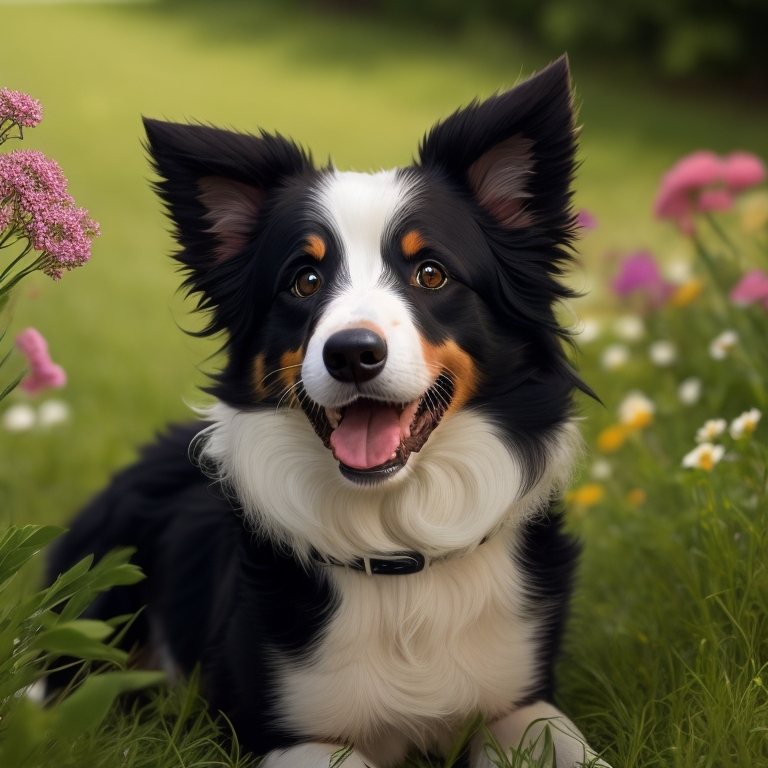
Common Indicators that the Border Collie Agrees with Cats
When it comes to determining whether Border Collies are good with cats, there are several common indicators that can help you understand whether your Border Collie is compatible with your feline friend.
- Calm and Relaxed Demeanor: If your Border Collie is relaxed and calm around cats, it’s a positive sign that they are comfortable and accepting of them. The dog will not show any signs of aggression, tension, or fear.
- Lack of Chase Instinct: Since Border Collies are instinctively herding dogs, they may be more inclined to chase smaller animals. However, a Border Collie that agrees with cats will be indifferent to their presence, not attempting to chase, bark or show any other aggressive behavior.
- Playful Interaction: It’s common for Border Collies to enjoy playtime with cats. If you notice your dog engaging in gentle play with cats, such as pawing at them or rolling around together, it’s a positive sign that they are comfortable and happy in each other’s company.
- Friendly Body Language: If your Border Collie is welcoming towards your cat, it will be evident in their body language. They will have a relaxed posture and facial expressions.
Keep in mind that every dog has a different personality, and some Border Collies may require more time to get used to the presence of cats. However, if your Border Collie exhibits the above indicators, you can be assured that they are good with cats.
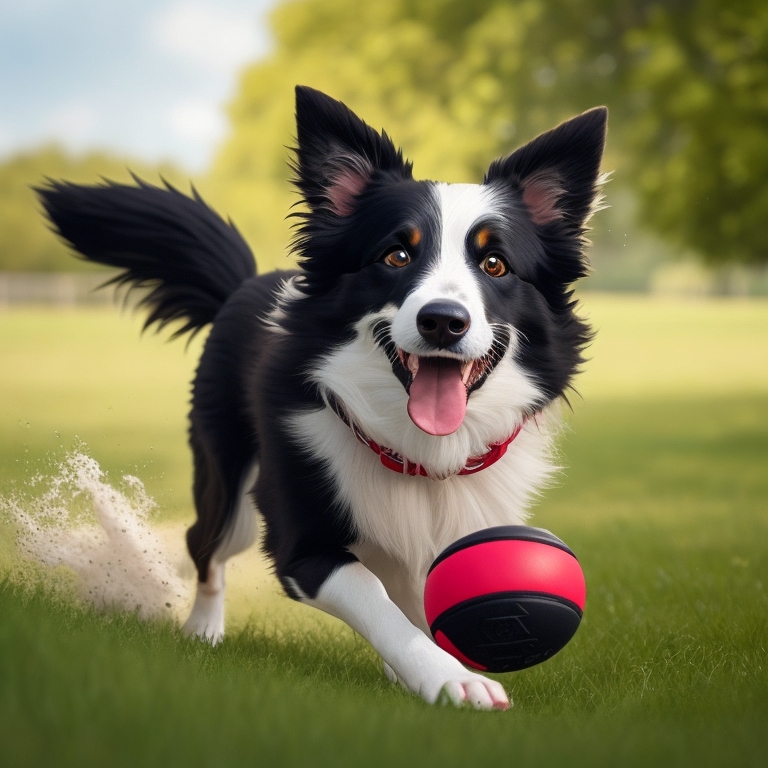
Indicators that can signal Danger
When introducing a Border Collie to a cat, it’s essential to know the warning signs that signal danger. Here are some indicators to keep in mind:
- Stalking: Border Collies are natural herders, and they may start to stalk the cat, which can make the cat feel intimidated and scared.
- Aggressive body language: Growling, barking, and snapping are warning signs that the Border Collie is feeling aggressive and may attack the cat.
- Raised hackles: When a Border Collie’s fur stands up, it’s a sign they’re feeling agitated, which can lead to aggressive behavior towards the cat.
- Chasing: Border Collies have a strong prey drive, which means they might chase the cat instinctively.
In Conclusion, knowing these signs can help you avoid a dangerous situation for your cat and Border Collie. Keeping an eye on their behavior and body language can help in preventing unfortunate incidents.
Encouraging Appropriate and Positive Interaction between a Border Collie and a Cat
Border Collies can be good with cats if given proper training and guidance. Encouraging interaction between a Border Collie and a cat should always involve careful supervision to ensure that it remains safe and positive for both animals.
Here are some ways to encourage positive interactions between your Border Collie and cat:
- Introduce them gradually: Start with short and supervised introductions between the two animals, gradually increasing the length of time they spend together as they become more familiar with each other.
- Use positive reinforcement: Reward both animals with treats and praise when they interact positively with each other.
- Provide separate spaces: Give each animal their own space where they can retreat to if they feel uncomfortable or overwhelmed.
- Keep playtime structured: When the animals are playing, ensure that the play is structured and supervised to avoid any potential accidents.
- Address aggressive behavior: If your Border Collie shows any signs of aggression towards your cat, address this behavior immediately by redirecting its attention and rewarding positive behavior.
Remember that every cat and Border Collie is unique, and their interactions will vary. Always pay attention to their body language and reactions to each other and adjust your approach accordingly.
Precautions to Take
Should you acquire a Border Collie Puppy?
If you’re considering getting a Border Collie puppy, there are a few things to consider before taking the leap. Border Collies are high-energy dogs that require a lot of attention and exercise.
If you’re not able to provide them with the amount of physical and mental stimulation they need, then a Border Collie might not be the right fit for you.
Additionally, Border Collies have a strong herding instinct, which means they tend to chase and sometimes nip at things that move, including cats. However, with proper training and socialization, Border Collies can coexist peacefully with cats.
Before bringing a Border Collie puppy into your home, make sure to do your research and consult with a reputable breeder or animal behaviorist.
Consider your lifestyle and whether a Border Collie puppy would fit in with your daily routine. Also, make sure to introduce your Border Collie puppy to any cats in your household slowly and carefully, and under close supervision.
Overall, while Border Collies can be great pets, they may not be the best fit for every family.
It’s important to consider all factors before making the decision to bring a Border Collie puppy into your home, and to take necessary precautions to ensure a safe and harmonious relationship between your Border Collie and any cats in your household.

Precautions with Cats when there is a new Dog in the House
If you’ve just brought a new Border Collie home and you already own a cat, it’s essential to take some precautions to ensure everyone’s safety. Here are some precautions to take when introducing a Border Collie to your cat:
- Supervise all interactions: It’s crucial to supervise all interactions between your Border Collie and cat until they get comfortable with each other. Initially, keep them in separate rooms and gradually introduce them to each other. Make sure you’re present during this process to intervene if required.
- Provide a safe space for your cat: Cats are territorial animals and need their own personal space. Ensure that your cat has a safe and secure place where they can retreat if they’re feeling uncomfortable or threatened.
- Start slow: Start by allowing them to sniff each other through a barrier. This will allow both of them to become familiar with each other’s scent before a face-to-face interaction. Gradually allow them to spend more time together while monitoring them.
- Use positive reinforcement: Use treats and positive reinforcement to encourage a positive and rewarding interaction between your Border Collie and cat. Praise them both when they’re behaving appropriately and calmly.
- Be patient: It may take several weeks or even months for your Border Collie and cat to get along with each other. Be patient and don’t rush the process.
By following these precautions, you can ensure a peaceful and happy home for both your Border Collie and cat.
Common Mistakes to Avoid when Introducing a Border Collie to your Cat
When introducing a Border Collie to your cat, there are some common mistakes that owners make that can lead to tension and harm between the two animals. Here are some precautions to take when introducing your Border Collie to your cat:
- Don’t force the introduction: Allow both animals to approach each other in their own time. Forcing them to interact can cause stress, anxiety, and aggression between the two animals.
- Keep the animals separated: It’s essential to keep both animals separated initially, especially in the first few days when they are still getting used to each other’s scent and presence. A leash or a baby gate can help create a physical barrier between them.
- Don’t leave them alone: When you are not around, it’s essential to separate the animals to prevent any unexpected confrontation between them. Supervise the introduction and ensure that they are always within your line of sight.
- Avoid using physical punishment: Physical punishment can cause fear and anxiety in both animals, especially if mishandled. Instead, focus on positive reinforcement and reward each animal for their good behavior and positive interaction with one other.
By avoiding these common mistakes, you can help ensure a positive and healthy relationship between your Border Collie and your cat. Remember, the key is to monitor their behavior closely, provide positive reinforcement, and make slow and gradual introductions.
Unexpected Situations – How to Handle them
When it comes to unexpected situations between a Border Collie and a cat, there are a few precautions you can take to prevent any harm. Here are some tips to keep in mind:
- Supervise all interactions between your Border Collie and cat. Never leave them together unsupervised, especially during meals and playtime.
- If you notice any aggressive behavior from your Border Collie towards your cat, separate them immediately. Try to determine the cause of the aggression and seek professional help if necessary.
- Keep your cat’s food and litter box in a separate area from your Border Collie’s food and water. This will prevent any territorial conflicts.
- In the case of a fight, never try to break it up with your bare hands. Use a loud noise, a spray bottle, or a firm command to separate them.
By taking these precautions, you can create a safe environment for your Border Collie and cat to coexist. Remember, prevention is always better than cure.
Conclusion
Border Collies can definitely coexist with cats, but it requires careful introduction and ongoing efforts to manage their relationship. With their high energy and herding instincts, Border Collies may pose a challenge initially, but with patience and effective training, they can learn to tolerate, respect, and even love their feline companions.
As a pet owner, it is crucial to take precautions and avoid common mistakes, as a positive and safe interaction between your cat and Border Collie is vital for a peaceful household.
Remember, early socialization and training, consistency, and respect for their individual needs are key to making this relationship work. By taking the necessary precautions and measures, owning a Border Collie and a cat can provide you with the joy and satisfaction of seeing two different species become friends and live harmoniously together.

